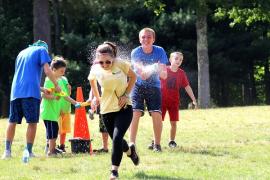Hi everyone, and welcome back to the Research 360 Blog.
For this issue, I have a very exciting announcement, and if you’re anything like me, this is really something cool. If you didn’t know, research studies are typically written up into papers, peer reviewed by other academics to ensure the integrity of the work, and published in journals for everyone to read. Some of the important journals in our field are the Journal of Parks and Recreation Administration, Journal of Leisure Research, Journal of Adolescent Development, and in particular for this blog, Journal of Youth Development. Take a look at my previous blogs for a reminder of how to access, read, and understand quantitative and qualitative research, as well as some tips and tricks to incorporate this kind of work into your practice.
Today’s blog is about a special double issue of the Journal of Youth Development focused entirely on camp research. This is really exciting because usually research in a certain area is spread out across a variety of publications and it’s tricky to track down an entire issue focused on one particular context for youth development. Led with an introductory piece by guest editors, current and former ACA Directors of Research, Laurie Browne, and Deb Bialeschki, the issue continues with a thought leader commentary by Lance Ozier. Lance is an educational specialist and camp supporter based at the City University of New York, and he works closely with the American Camp Association on many projects. Following Lance’s piece, seventeen full length articles are included ranging on topics such as 21st century skill development, camper developmental outcomes in regards to college and career readiness, and life success, outcomes for youth at specialized camps (for example, medically oriented), race evasiveness among staff, and program evaluation to name a few. Each article provides information about the background of the topic, details about the study that was conducted, and suggestions for implications for camp practitioners. Longtime outdoor recreation researcher and camp advocate, Karla Henderson, provides the closing comments to the issue. Within her piece, she ties together the articles included in the special double issue, and asks important questions. What do we do with this work? What gaps remain in the camp literature? And where do we go from here?
Keep in mind that you can read the abstract of each article, which will give you a good idea of whether or not you should invest a bit more time in reading the entire piece. Although all articles are interesting, some studies may be more relevant to you and your camp, and those are the ones you should prioritize reading first. I encourage you to choose one article to read, take some time to go through it once or twice, and highlight what is important or impactful to you. Think of how the findings from the study can be applied in your own camp and consider making some small changes in your programming. Try sharing some of the big ideas with your leadership team or department heads. They might have a different perspective to you and could have different ideas about how to incorporate the findings into their individual programs. Besides, research and implementation of the findings is all about collaboration — might as well get more people involved! Together we can use this work and find out exactly what Karla asked: what’s next for camp related research?
Access the current issue here. Best part? It’s completely free. Happy reading!
Victoria Povilaitis, a research assistant for ACA, is a doctoral student at the University of Utah and has worked in the camp industry in a variety of roles, including staffing coordinator, athletic director, and sports coach.
Photo courtesy of Flying Horse Farms in Mt. Gilead, Ohio
Thanks to our research partner, Redwoods.
Additional thanks goes to our research supporter, Chaco.
The views and opinions expressed by contributors are their own and do not necessarily reflect the views of the American Camp Association or ACA employees.





